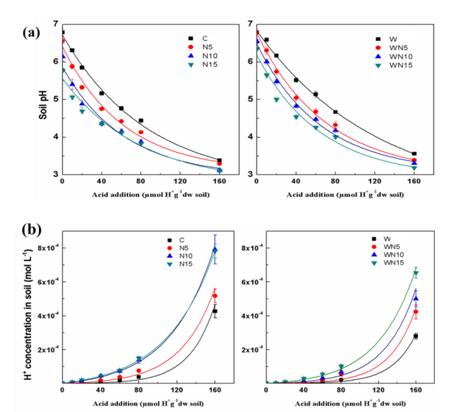Increasing atmospheric nitrogen (N) deposition-induced soil acidification has been an increasing global threat to terrestrial biodiversity and ecosystem functioning. Chronic N inputs could increase soil inorganic N and thus induce more leaching of nitrate and base cations; the input of NHx could lead to an increase in soil acidity via nitrification and plant uptake of ammonium.
As a main part of Eurasia Steppe, semi-arid grasslands in northern China are vulnerable to global change factors and are facing increasing atmospheric N deposition and precipitation.
Therefore, we hypothesized that elevated precipitation, and it’s interaction with N deposition, may affect soil acid buffering capacity.
Dr CAI Jiangping and coworkers from IAE examined the effects of N and water addition on soil acidification character (9-year effect) and mineral elements transformation in soil-plant system by a field manipulation experiment in Duolun Restoration Ecological Research Station. Soil acid buffering capacity, effective cation exchange capacity (ECEC), and available mineral elements in soil were measured.
Results showed that chronic N input decreased cation concentrations (particularity Ca2+), soil ECEC and base saturation. These induced the decreases of soil acid buffering capacity (Acid BC), accelerating soil acidification process. Significant interactive N and water effects were detected on the soil acid buffering capacity. Increased soil cation exchange capacity under water addition enhanced base cations retention by soil, thus could alleviate the decline of soil acid buffering capacity under N addition.
The above results were published in Atmospheric Environment entitled “Precipitation-mediated responses of soil acid buffering capacity to long-term nitrogen addition in a semi-arid grassland”.
This work was supported by the National Key Research and Development Program of China, and the National Science Foundation of China.

Fig 1. Soil acid buffering processes during nitrogen input and transformation (Image by CAI Jiangping).

Fig 2. Titration curves of different treatment soils. Data presented are means of seven reduplicated samples (±SE)(Image by CAI Jiangping).
Email: cai291135380@126.com .
Publication Name:CAI Jiangping et al.